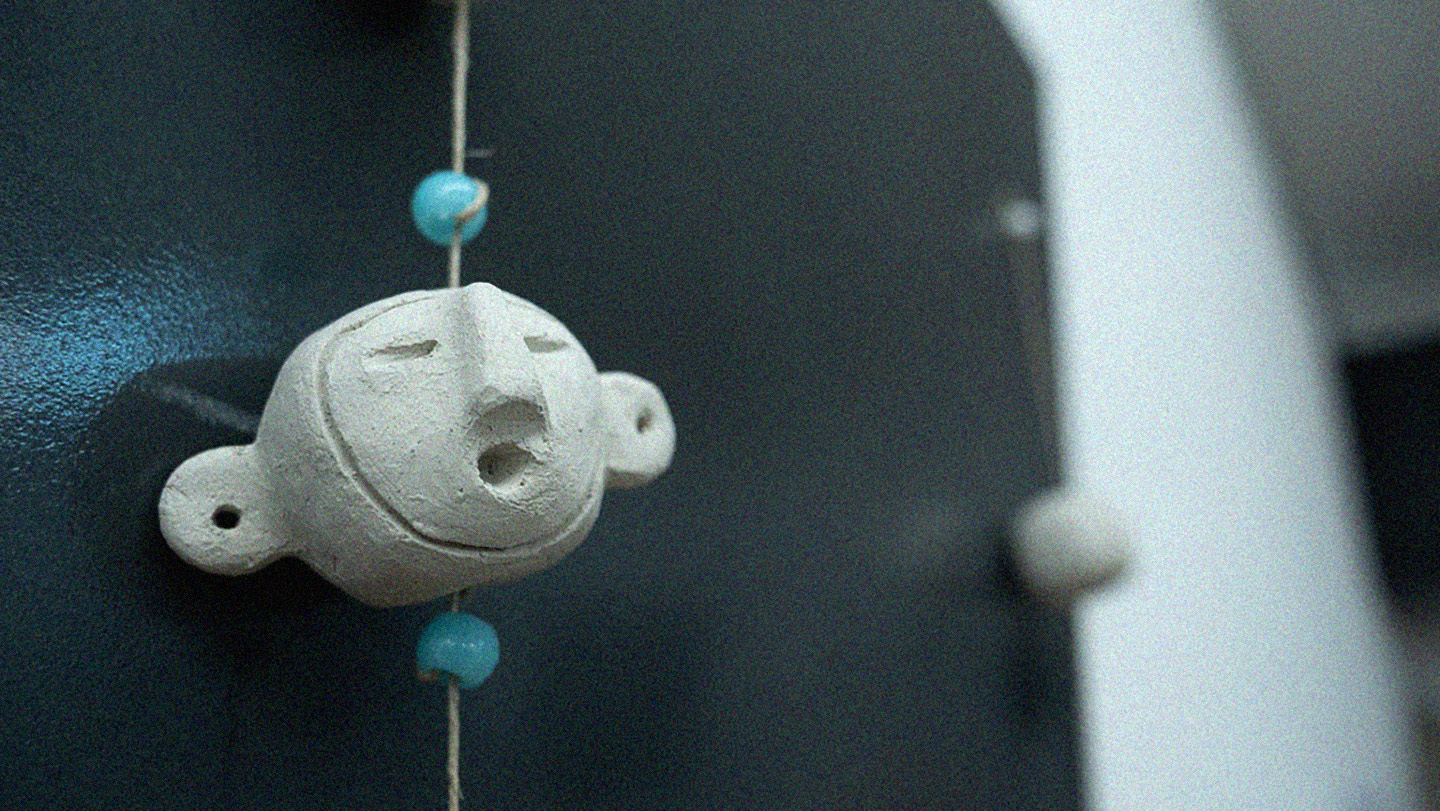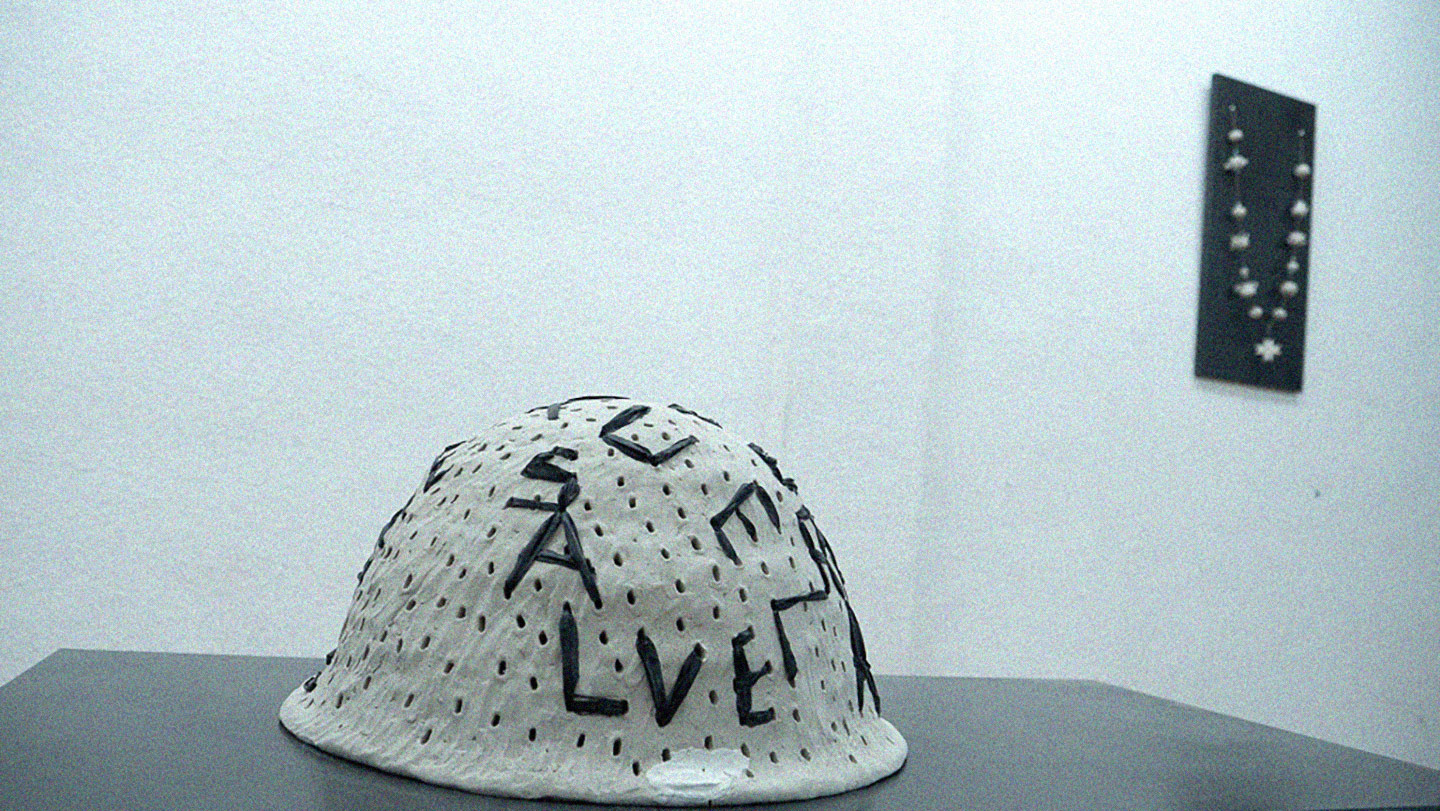
19 Feb Luisa Barrera Queupumil
September 2021
To conclude her first month of residency, Luisa presents three pieces made of unfired clay. In them she reflects on her presence in Blanca and wonders how this relates to her country of origin (Chile), considering her personal connections and customs, which are linked to the Mapuche culture. The Mapuche people are one of the most numerous indigenous groups in South America, still living in regions of Chile and part of Argentina. Among their traditions, Luisa pays special attention to those that reflect on spirituality, life-death cycles and rituals of connection with the earth. Through her pieces, the artist proposes a dialogue between these customs and the predominant Christian culture of the Iberian Peninsula, which has an intertwined history with the peoples of South America since the times of colonization.
In the middle of the room, the Epitaph in Kuel rises like a small mountain. A Kuel is a Mapuche ceremonial mound used to connect with the spiritual world that is above us, Wenu-Mapu. In this piece letters and words made of plastic tape have been embroidered, collecting a mixture of ritual formulas. The letters maintain gestures of the Roman funerary epigraphy of the necropolis, and construct words from the Mapudungun language.
The second work is titled Restoring Affections. For Luisa, this is a construction-deconstruction exercise that reflects on the difficulties of assembling a fragmented cultural memory.
On the back wall, a Cuencas del Tardío is placed, a piece that simulates a Catholic rosary but whose basins refer to the symbols of the late agro-pottery period of South American civilizations. This piece is a collection of sermons in clay, a material loaded with links with the land and with artisan work.
October 2021
In her second month as a resident, Luisa presents two pieces made of unbaked clay. These recreate ancient instruments of the Mapuche culture, called “Trutruka”. The original Trutruka, several meters long and made with “colihue” (cane in Mapundungún -the Mapuche language) served as loudspeakers to play ritual songs.
For the realization of these pieces, Luisa uses the original Mapuche ceramic technique based on “lulos” -elongated rolls of clay that are joined with hand pressure- which has been the basis of all the ceramics utensils with a practical purpose that were made by this culture.
Through these contemporary “Trutrukas”, we can listen to stories and archives of the Mapuche cultural past, reproduced by mobile phones and read by an artificial intelligence voice.
The Mapuche people are one of the most numerous indigenous peoples in South America, still living in regions of Chile and part of Argentina. Luisa’s work reflects on the difficulties of assembling a fragmented cultural memory, which she tries not only to reconstruct and make visible, but also to connect with the present. Her work attempts to share knowledge and teaches us possible means to exist in a sustainable way. In times of environmental and systemic collapse, ancient cultures bring a message of vital importance: there are forms of life that are not based on extractivism and the destruction of the planet we inhabit.






